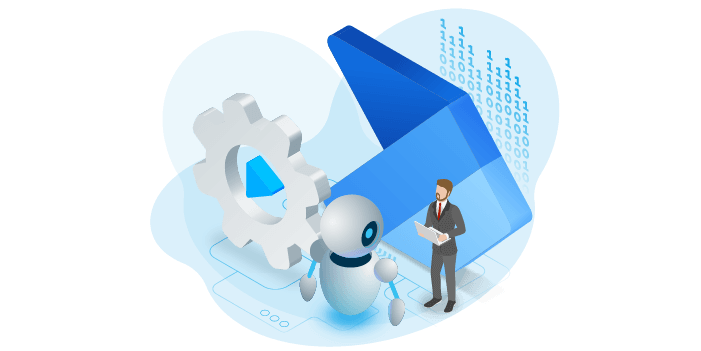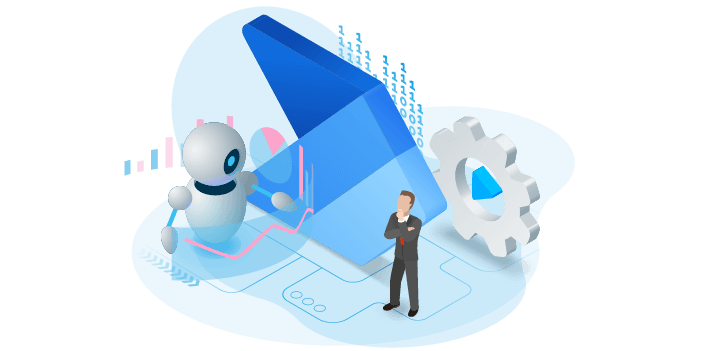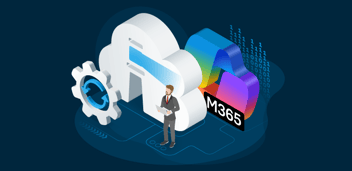Since the renaming of Flow to Power Automate, there has always been something more on the horizon than just the classic flows and connectors that the rebranded service is renowned for. On April 2nd, 2020, Microsoft announced UI Flows, their new Robotic Process Automation (RPA), for widespread use in the digital business ecosystem.
RPA defined
Generally, RPA is a type of technology that emulates human activity with digital systems to provide a business outcome or process. It first requires human input to set up and calibrate the software, and the ‘robot’ can interact with other systems, retrieve data, and activate communication in an organic-like way to complete repetitive tasks.

Microsoft and Coca Cola RPA use case
There are a lot of use cases out there for RPA. In our recent online mini summit, the mastermind behind Power Automate, Stephen Siciliano, delivered a Keynote session outlining the Power Automate product timeline. During the session, he mentioned a use case of Power Automate, RPA, and the company Coca-Cola for shipment verification.
Although Coca-Cola had an RPA solution already in production with another vendor, they migrated their RPA solution to Power Automate because of performance issues. Migrating to Power Automate significantly improved Coca-Cola’s licensing costs, reduced development costs from a year to three months – Power Automate being part of the low-code Power Platform – and leveraged the cloud to scale the solution, improving performance.
Predictions: how the future looks for digital transformation
Back at the beginning of the year, I wrote a blog analyzing IT predictions for 2020 based on research conducted by IDC. Almost a year on, it is interesting to look back at those predictions. In contrast to 2019 predictions by Forbes technology council regarding digital transformation, IDC predicted organizations, in general, will move from being overly cautious to innovative.

Furthermore, it was suggested by 2023, over 50% of ICT budget allocations will be used for digital transformation and innovation – a rise of 27% from 2018. One must also wonder how much of this increased budget will be allocated for RPA and if the current climate, which no one predicted, will significantly increase or decrease the budget percentage.
Digital business ecosystems
Carrying on the predictions from the beginning of the year, assumptions are that 60% of the G2000 will have a digital developer ecosystem by 2023. Half of those enterprises will drive 20%+ of digital revenue through their digital ecosystem.
Digital business ecosystems encompass a network of partners, developers and customers facilitated by modern, cloud-first technologies. They can be made up entirely of internal parties or can expand to include external individuals and organizations. Digital ecosystems are business-driven network effects.
When looking at what type of RPA Power Automate caters for and where it fits in to the digital business ecosystem, we are given a choice of both Attended and Unattended RPA. Attended RPA is looking at the citizen developer or power user who wants to automate manual individual tasks on demand.

Unattended or fully automated caters for the scaled automated business processes running in the background. Not so much driven by the power user or business user to automate individual tasks, but more so by a dedicated RPA team to build out company solutions.
RPA adoption
More recently in 2020, Garter has predicted that 90% of large organizations will have deployed a type of Robotic Process Automation (RPA) by 2022, and over 60% of companies with over 1-billion-dollar revenue will have deployed RPA by the end of this year. Furthermore, in June 2020 Gartner has rated Microsoft, and therefore, Power Automate, the highest in completeness of vision in the Gartner Magic Quadrant for Robotic Process Automation.
I believe the trend in both earlier and present predictions are showing similar optimistic signs despite the current global economic climate affected by the events of this year so far. In my opinion, the rapidly increasing development of Power Automate means although organizations may be hesitant over substantial digital transformation projects, the investment in automating repetitive manual tasks with Power Automate will seem a small risk compared to the potential return of investment.
Governance automation for Power Automate and Microsoft 365
The Power Automate product roadmap also indicates an update to improve management and governance features. Security and governance are essential. Especially, when organizations are encouraged to build automation wherever possible to improve business processes. The platform administration team will need a helping hand.
If you are an administrator or platform owner, I recommend looking at Rencore Governance, which brings automation to your Microsoft 365 and Power Platform governance approach. It scales Microsoft 365 and Power Automate governance by automatically discovering, monitoring, and automating the handling of arduous manual governance tasks, allowing you to stay in control of your Microsoft 365 and Teams environments.





